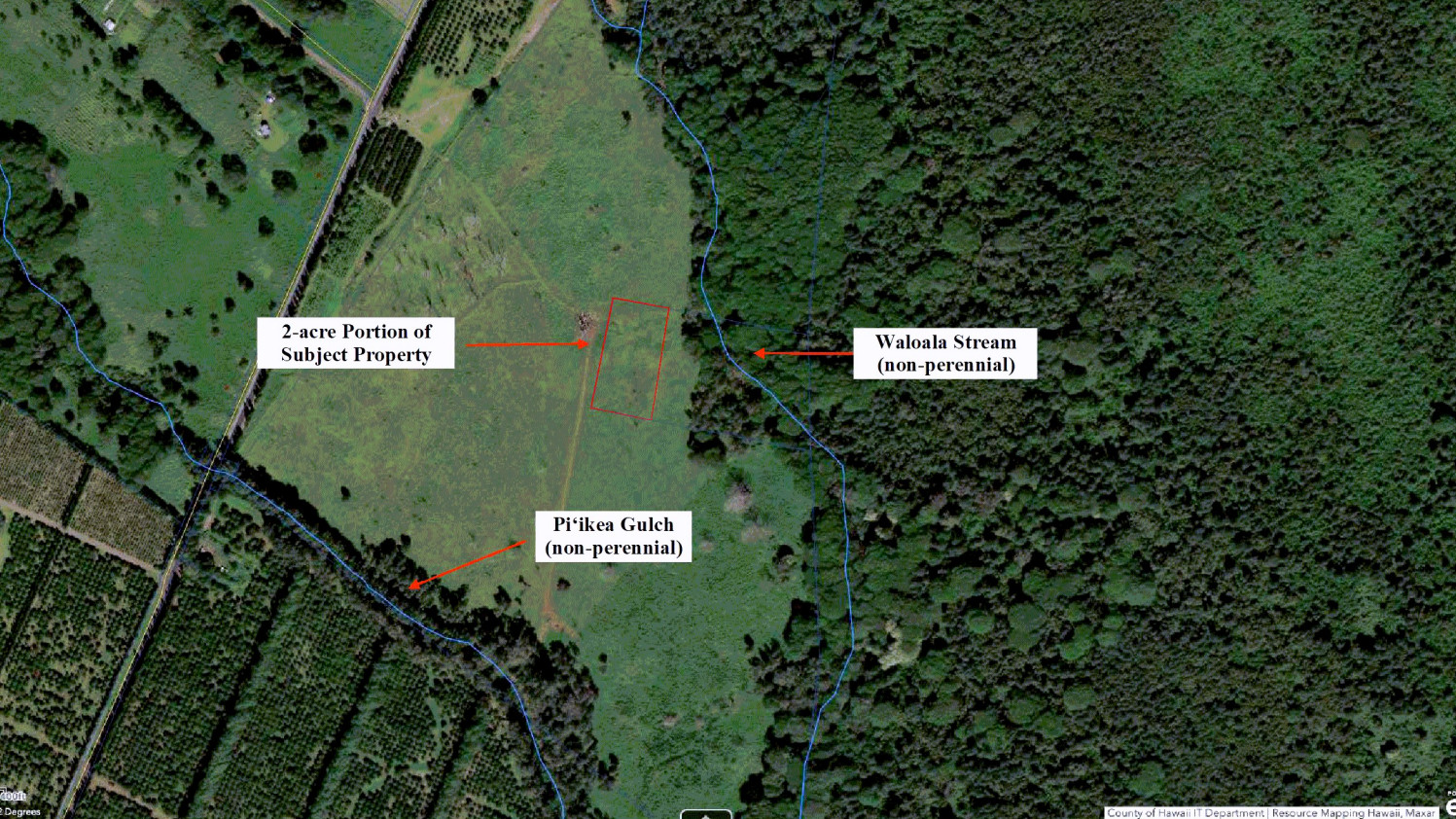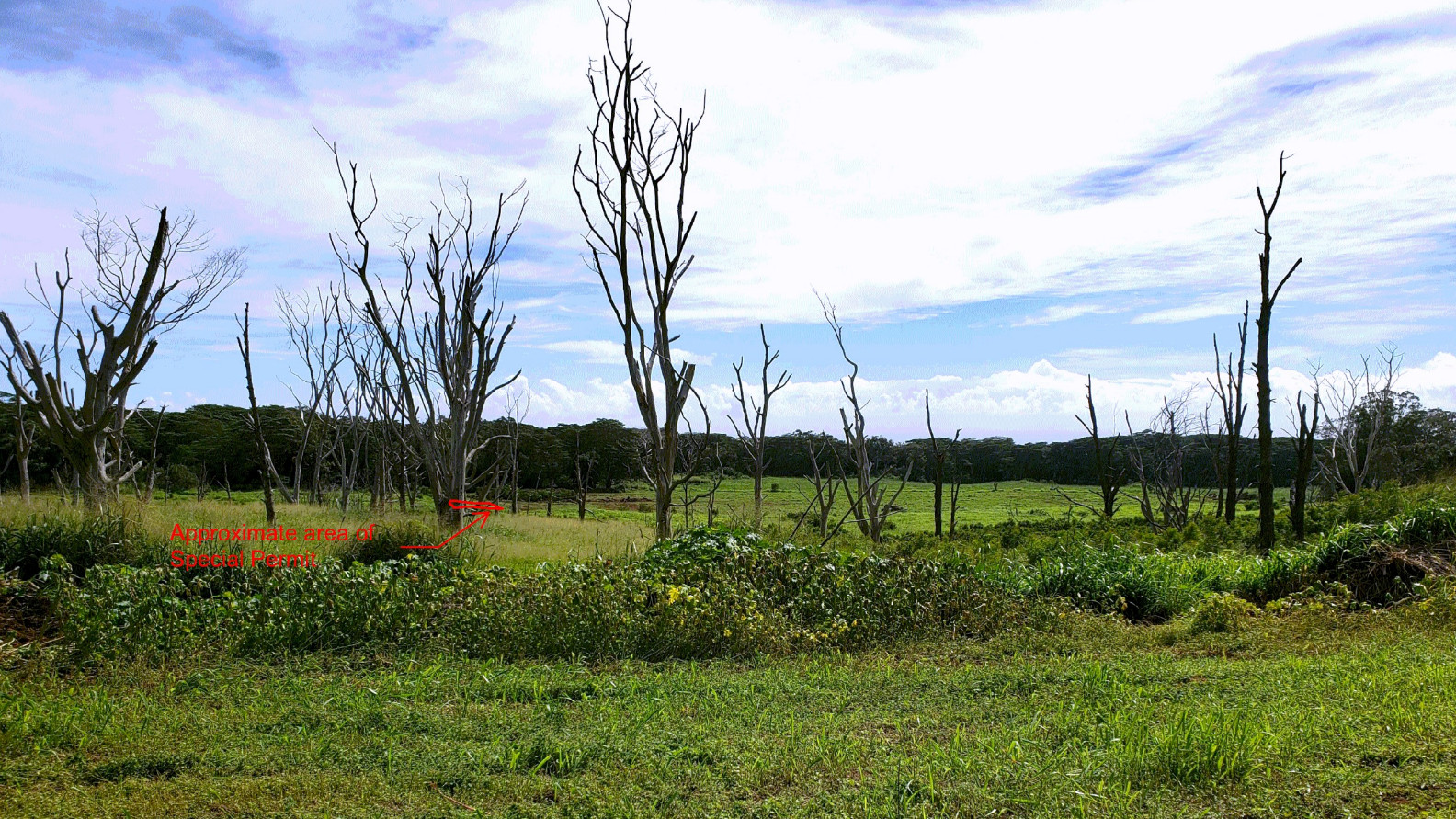(BIVN) – The Hawaiʻi County Windward Planning Commission this week postponed a decision on a special permit for an array of satellite dishes and antennae planned for Kaʻū.
The Academia Sinica Institute Of Astronomy And Astrophysics has filed a Special Permit Application “for the temporary operation of an array of 10 satellite dishes and a 50-foot x 50-foot dipole antenna array and related improvements to conduct research on Fast Radio Bursts (FRBs) on an approximately 2.0-acre portion of a larger 10.7-acre property in the State Land Use Agricultural District.”
The array will be located makai of the Wood Valley Road/Makakupu Road intersection, in the Kaʻalaʻala-Kapalapala, area of the Kaʻū district. The property is owned by the Edmund C. Olson Trust and will be leased to the ASIAA for the project.
The planning department is recommending that the permit request be approved by the Windward Planning Commission, although during the a meeting on Thursday, the matter was postponed because two commissioners – John Cross and Louis Daniele – recused themselves due to a potential conflict of interest, and the commission did not have the quorum necessary to vote.
Although no vote was taken at the meeting, the public still had a chance to speak out on the subject.
“There is concern that as a historically agricultural zoned area that could very well open the door for similar explorations and permits on a commercial level,” said Wood Valley resident Stefan Taylor, testifying remotely via Zoom.
“My family owns about 50 acres in Wood Valley on North Road almost directly across the street from where this proposed project is,” said Michelle Wiel in opposition to the project.
“We would be able to see the satellite dishes and the shipping containers from our location. Just aesthetically, it’s not aligned with the existing agricultural heritage of the area.”
Wiel said that in the past, project representatives have stated one of the the main reasons the remote location in Kaʻū was chosen was the lack of existing radio waves and signals in the area. “I am fully in support of science, but I just am opposed to having this in this area in part because it precludes any sort of advancement in terms of bringing cell service to the area, in the future. Currently, there is no cell service there. Which means in an emergency, you can’t contact the outside world.”
Scientists say FRBs, or fast radio bursts – pulses of extremely intense radiation that occur in the distant Universe – “are among the most exciting areas of study in modern astrophysics”. The proposed array is designed to help gain a better understanding of the origins of these bursts.
Chief Scientist for Hawaii Operations for ASIAA, Geoffrey Bower, who has made frequent use of astronomical facilities on Mauna Kea and Mauna Loa throughout his career, told the commission in written testimony that the Kaʻū site is ideal. “First, the natural shielding provided by the high mountains surrounding the site and the isolation from population centers protects us from the effects of human- generated radio signals, also known as radio frequency interference (RFI),” Bower wrote. “RFI can obscure FRBs making them undetectable, in the same way that light pollution prevents us from seeing the visible light from stars. Second, the mid-Pacific location of our telescopes allows us to see parts of the sky when they are invisible to other observatories around the world. This will create the opportunity to make unique discoveries and to be the connector between FRB observatories from North America and Asia.”
The Windward Planning Commission will revisit the permit request in a future meeting.



by Big Island Video News9:01 am
on at
STORY SUMMARY
KAʻŪ, Hawaiʻi - A commission decision on an array of satellite dishes and antennae planned for Kaʻū has been pushed back, but the public still had a chance to sound off.